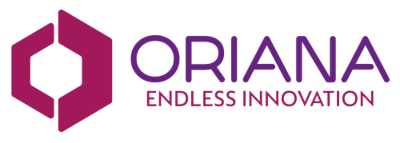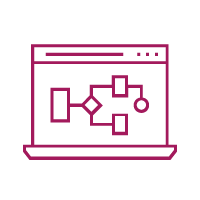Digital process automation (DPA), Robotic process automation (RPA), business process management (BPM)…making sense of all the latest process buzzwords.
Today, we live in a digital world. People are almost always online, connected to the internet via smart devices. It’s difficult to keep track of all the terms used to describe how businesses and governments are using technology to improve their operations and interact with their customers, employees, or citizens. Nearly twenty years ago, Watt S. Humphrey known as the “father of software quality” coined the phrase, “every business is a software business” in his book Winning with Software: An Executive Strategy. What followed in the decades since has been a transformation of the ways all businesses, and even governments, operate.
Often referred to as digital transformation, organizations of every type and size have applied various technologies to improve existing processes and create new ways of doing business. At the heart of this transformation lies Digital Process Automation (DPA), also called Business Process Automation (BPA). But how do Business Process Management (BPM), Robotic Process Automation (RPA), Artificial Intelligence (AI), and other trending terms fit in? Read on and we’ll explain.
Business Process Management (BPM) defined
Before defining DPA, we should start with its precursor, Business Process Management. While several definitions for BPM exist, the following definitions from Business Process Management Institute and analyst firm Gartner are useful.
The BPM Institute defines BPM Institute as the definition, improvement, and management of a firm’s end-to-end enterprise business processes in order to achieve three outcomes crucial to a performance-based, customer-driven firm: 1) clarity on strategic direction, 2) alignment of the firm’s resources and 3) increased discipline in daily operations.
Whereas Gartner defines it as “the discipline of managing processes (rather than tasks) as the means for improving business performance outcomes and operational agility. Processes span organizational boundaries, linking together people, information flows, systems, and other assets to create and deliver value to customers and constituents.”
Business Process Automation / Digital Process Automation
Defined
BPM has a long history, growing out of management and organizational sciences made popular by Frederick Winslow Taylor and Peter Drucker among others. It rose to prominence in the early 1990s. As digitization began to take hold during the 2000s, enterprises began to apply technology to automate processes for operational efficiency and BPA became a technology segment in its own right. Although definitions for BPA vary, the common theme is the application of technology to automate complex, recurring processes.
Gartner defines BPA “as the automation of complex business processes and functions beyond conventional data manipulation and record-keeping activities, usually through the use of advanced technologies. It focuses on “run the business” as opposed to “count the business” types of automation efforts and often deals with event-driven, mission-critical, core processes. BPA usually supports an enterprise’s knowledge workers in satisfying the needs of its many constituencies.
Forrester began using the term Digital Process Automation in 2017 to replace Business Process Management. According to its 2017 report, “Where once cost savings drove BPM, the new goal is digital transformation. As organizations move increasingly toward a customer-obsessed operating model, digitizing all business functions becomes an imperative.”
How is BPA/DPA different from Robotic Process Automation?
Robotic Process Automation is one of several technologies that aid BPA. It uses software robots, called bots, that can perform repetitive actions usually done by humans. RPA differs from workflow automation tools in which developers determine the sequence of actions to be performed, RPA bots “learn” how to perform tasks by watching a graphical user interface while tasks are performed.
Gartner defines Robotic process automation (RPA) as “a productivity tool that allows a user to configure one or more scripts (which some vendors refer to as “bots”) to activate specific keystrokes in an automated fashion. The result is that the bots can be used to mimic or emulate selected tasks (transaction steps) within an overall business or IT process. These may include manipulating data, passing data to and from different applications, triggering responses, or executing transactions. RPA uses a combination of user interface interaction and descriptor technologies. The scripts can overlay on one or more software applications.”
RPA tools often extend the capabilities of BPA/DPA tools where tasks, no matter how complicated, form part of a large business process. All leading RPA software vendors provide interfaces to BPA/DPA platforms.
Would you like to learn more about digital process automation? Check our on-demand webinar on digital process automation and low-code. In this webinar, Mark Downey of Oriana and guest speaker Rob Koplowitz, VP and Principal Analyst at Forrester, will discuss how these two technologies are coming together to revolutionize how companies approach process innovation.



